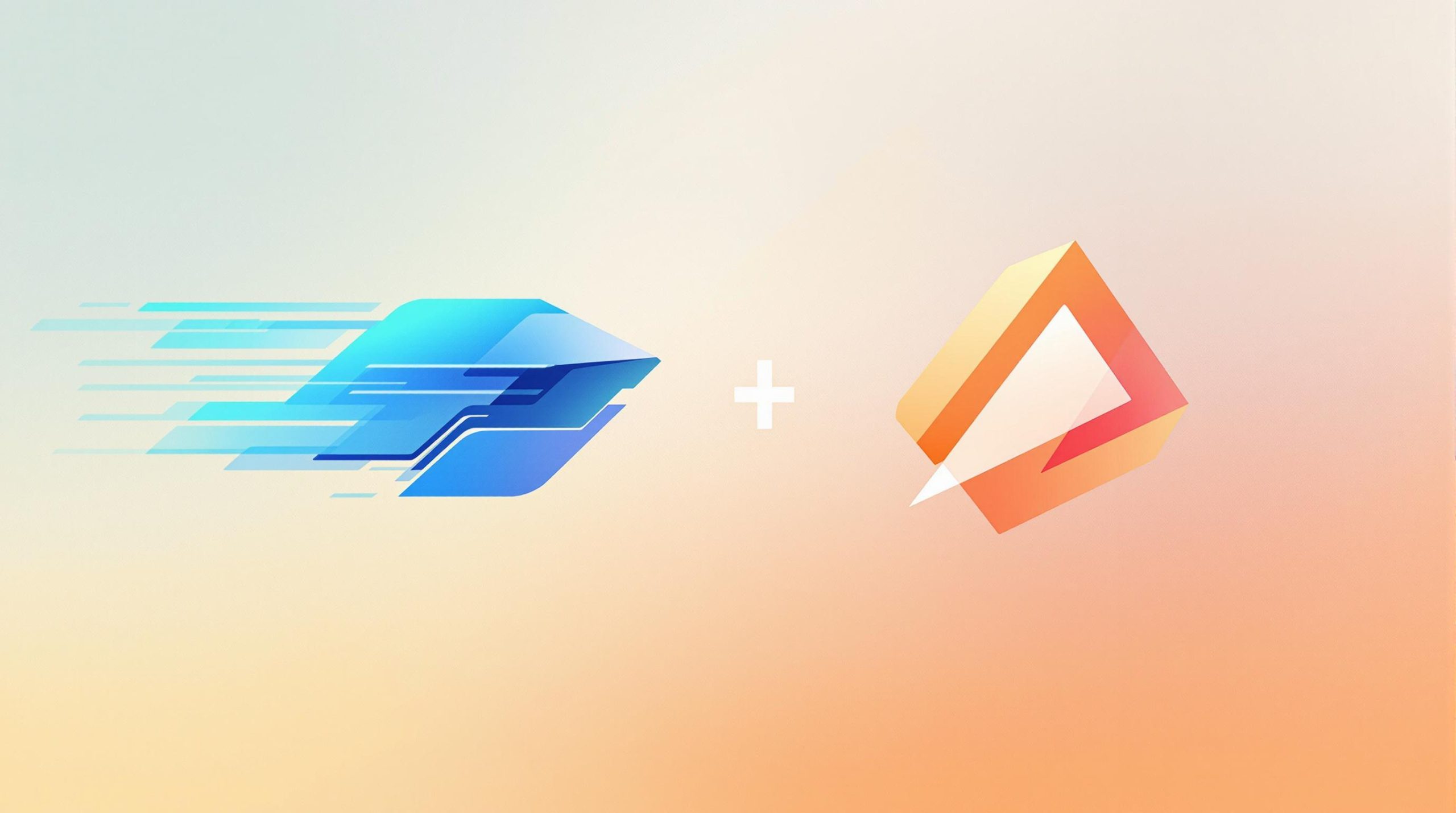Gemini 2.0 and OpenAI o1 are two leading generative AI models, each excelling in different areas:
- Gemini 2.0 Flash Thinking: Focuses on speed and multimodal processing (text, images, audio, video). It’s ideal for tasks requiring real-time analysis and dynamic multimedia handling.
- OpenAI o1: Prioritizes precision and detailed reasoning, especially in science and mathematics. It uses step-by-step problem-solving and supports large-scale contexts.
Quick Comparison
| Feature | Gemini 2.0 Flash Thinking | OpenAI o1 |
|---|---|---|
| Primary Focus | Fast multimodal processing | Analytical depth and precision |
| Speed | 2x faster than Gemini 1.5 Pro | Designed for detailed tasks |
| Input Types | Text, images, audio, video | Text, vision (via Azure) |
| Best For | Real-time multimedia tasks | Scientific and mathematical analysis |
| Availability | Early 2025 (limited testing) | Available via Azure OpenAI |
Choose Gemini 2.0 for speed and versatility or OpenAI o1 for complex problem-solving and precision.
Real-World Comparison: ChatGPT4 (o1) vs Gemini Advanced vs Claude Pro vs Perplexity Pro
Comparing Features: Gemini 2.0 vs. OpenAI o1

Performance Metrics Analysis
Gemini 2.0 stands out for its speed and accuracy when tackling complex queries. On the other hand, OpenAI o1 emphasizes precision, taking a more deliberate approach to processing. This makes it especially effective for tasks in fields like science and mathematics [1] [2]. These distinct strategies highlight their respective strengths in solving challenging problems.
Another key difference lies in how these models handle and integrate various types of data.
Multimodal vs. Monomodal Capabilities
Gemini 2.0 is designed to handle text, images, audio, and video, offering real-time multimodal analysis [1]. OpenAI o1, which started as monomodal, now supports vision through Azure [4]. However, it doesn’t natively process audio or video. This makes Gemini 2.0 a better fit for tasks requiring diverse data inputs, while OpenAI o1 focuses on detailed analysis within its supported formats.
These differences in input capabilities directly influence their problem-solving styles.
Creativity and Problem-Solving
Gemini 2.0 excels in tasks that require quick, multi-step reasoning, making it a strong choice for dynamic scenarios [1]. Meanwhile, OpenAI o1’s chain-of-thought reasoning delivers precise, detailed solutions, especially in scientific and mathematical contexts [2]. This contrast allows users to choose based on their needs – whether they prioritize fast decision-making or thorough analysis.
| Model Focus | Gemini 2.0 | OpenAI o1 |
|---|---|---|
| Processing Style | Rapid multi-step reasoning | Chain-of-thought analysis |
| Input Types | Full multimodal support | Text and vision (via Azure) |
| Optimization | Speed and versatility | Precision and depth |
sbb-itb-5392f3d
Applications in Various Industries
Industry-Specific Use Cases
Gemini 2.0 is transforming diagnostic workflows by integrating imaging and patient data, streamlining processes for healthcare professionals [1].
Meanwhile, OpenAI o1 excels in financial modeling by providing detailed, explainable calculations for complex risk assessments, making it an essential tool in the finance sector [2].
These examples highlight how leveraging the strengths of each model can address specific industry challenges effectively.
Examples of AI Integration
The gaming industry demonstrates how these AI models can meet diverse demands. Gemini 2.0’s Flash Thinking feature supports real-time content creation, such as dynamic dialogue and environmental design. Its ability to seamlessly integrate visuals and audio enhances player engagement and immersion [1].
| Industry | Gemini 2.0 Application | OpenAI o1 Application |
|---|---|---|
| Healthcare | Multimodal diagnostic analysis | Detailed medical research |
| Finance | Real-time market data processing | Complex risk modeling |
| Gaming | Dynamic content generation | – |
| Content Creation | Multimedia content production | In-depth research synthesis |
Impact on Workflows
For content creators, Gemini 2.0 simplifies production by allowing simultaneous creation and editing of text, images, and audio. This reduces the time spent on repetitive tasks and speeds up the creative process [1]. On the other hand, OpenAI o1 is a powerful tool for technical fields requiring precise calculations, offering detailed analysis for professionals in areas like finance and engineering [2].
These AI tools do more than just automate tasks – they enable professionals to focus on strategic decision-making while the AI handles routine processes. This capability is particularly valuable in fast-paced environments like emergency response and market trading, where decisions must be made quickly based on diverse data inputs [1][2].
These examples showcase how Gemini 2.0 and OpenAI o1 are tailored to meet specific professional needs, paving the way for further discussion on their cost and accessibility.
Detailed Comparison: Features, Costs, and Access
Feature Comparison Table
Here’s a side-by-side look at some technical specs that set these models apart:
| Feature | Gemini 2.0 Flash Thinking | OpenAI o1 |
|---|---|---|
| Context Window | Not publicly disclosed | 200K tokens [2] |
| Output Limit | Not publicly disclosed | 100K tokens [2] |
| Output Modalities | Text, audio, images (via single API) [1] | Text-based responses |
| Integration | LLM framework [3] | Azure OpenAI Service [4] |
Cost and Accessibility Analysis
Gemini 2.0 is built for developers who need flexible multimodal capabilities, thanks to its LLM framework that simplifies deploying text, audio, and image processing. On the other hand, OpenAI o1 is designed for enterprises, offering scalability and security through its Azure integration [3] [4].
However, neither model has disclosed pricing details, so it’s tough to make direct cost comparisons. What is clear is that their deployment strategies cater to different needs: Gemini 2.0 focuses on versatility, while OpenAI o1 emphasizes enterprise-grade reliability.
Model Advantages and Limitations
Gemini 2.0 Flash Thinking Strengths:
- Processes text, audio, and images seamlessly through a single API [1].
- Offers a ‘Thinking Mode’ for clear reasoning paths [1].
- Well-suited for real-time tasks like medical diagnostics [1].
OpenAI o1 Strengths:
- Can handle large-scale contexts with a 200K token limit [2].
- Excels in solving complex problems with deliberate reasoning [2].
- Perfect for data-heavy tasks like financial modeling [2].
These differences shape their real-world applications. For instance, Gemini 2.0’s multimodal capabilities are ideal for analyzing medical images, while OpenAI o1’s ability to manage extensive context is great for in-depth financial risk analysis. Choosing the right model depends on aligning its strengths with the specific demands of your industry.
Conclusion: Selecting the Right Model
Key Differences Recap
The main differences between Gemini 2.0 Flash Thinking and OpenAI o1 stem from their unique strengths. Gemini 2.0 focuses on speed and handling multimodal inputs, while OpenAI o1 is designed for in-depth analysis and precise reasoning [1][2]. These differences reflect their core purposes and intended use cases.
Recognizing these distinctions is essential when deciding which model best fits your needs.
Model Selection Recommendations
Choosing the right model depends on the specific requirements of your tasks:
| Task Type | Recommended Model | Strength |
|---|---|---|
| Real-time Analysis | Gemini 2.0 | Fast processing and multimodal input |
| Complex Problem Solving | OpenAI o1 | Detailed reasoning and analysis |
If speed and the ability to process diverse data types are priorities, Gemini 2.0’s integrated API is a strong option [1]. On the other hand, OpenAI o1 is better suited for tasks requiring deep analysis and problem-solving [2].
Both models offer distinct benefits, allowing organizations to choose based on their specific needs.
Future of Generative AI
Generative AI is rapidly advancing, and both models are set to play key roles in shaping its future. Gemini 2.0’s upcoming integration with Google Search and other tools in early 2025 highlights its focus on accessibility [1]. Meanwhile, OpenAI o1’s collaboration with Azure services underscores its focus on enterprise-level solutions [4].
Looking ahead, Gemini 2.0 is expected to enhance its multimodal capabilities, while OpenAI o1 will likely continue refining its reasoning strengths. This evolution will provide even more tailored AI solutions, helping industries address unique challenges and seize new opportunities.

